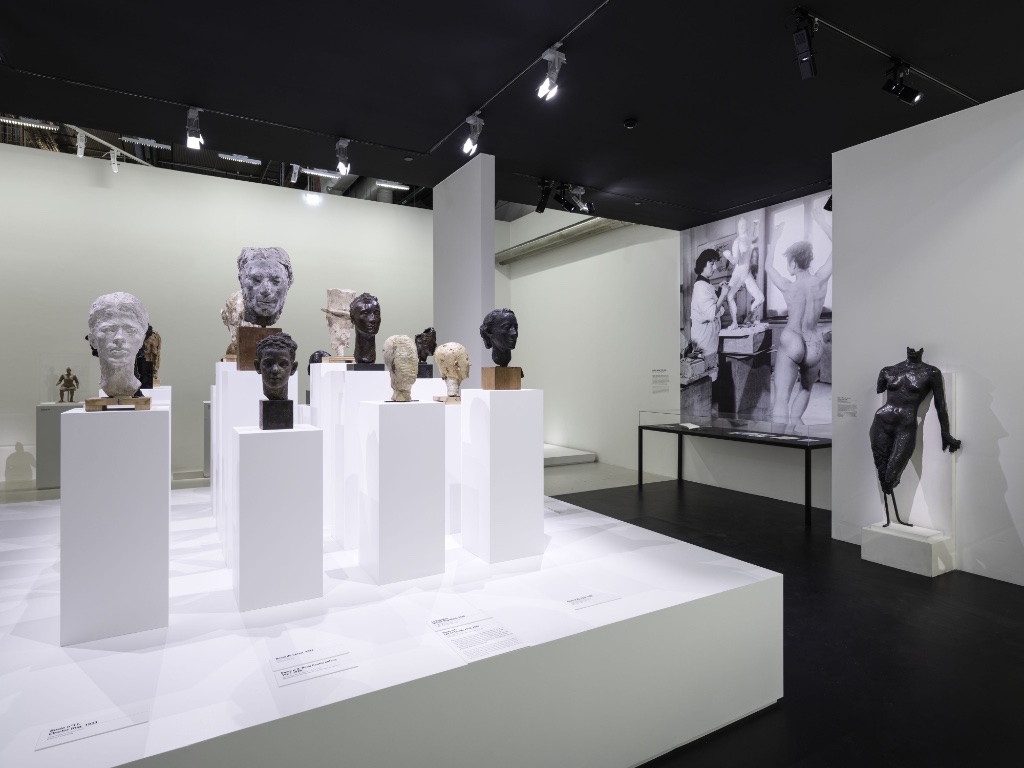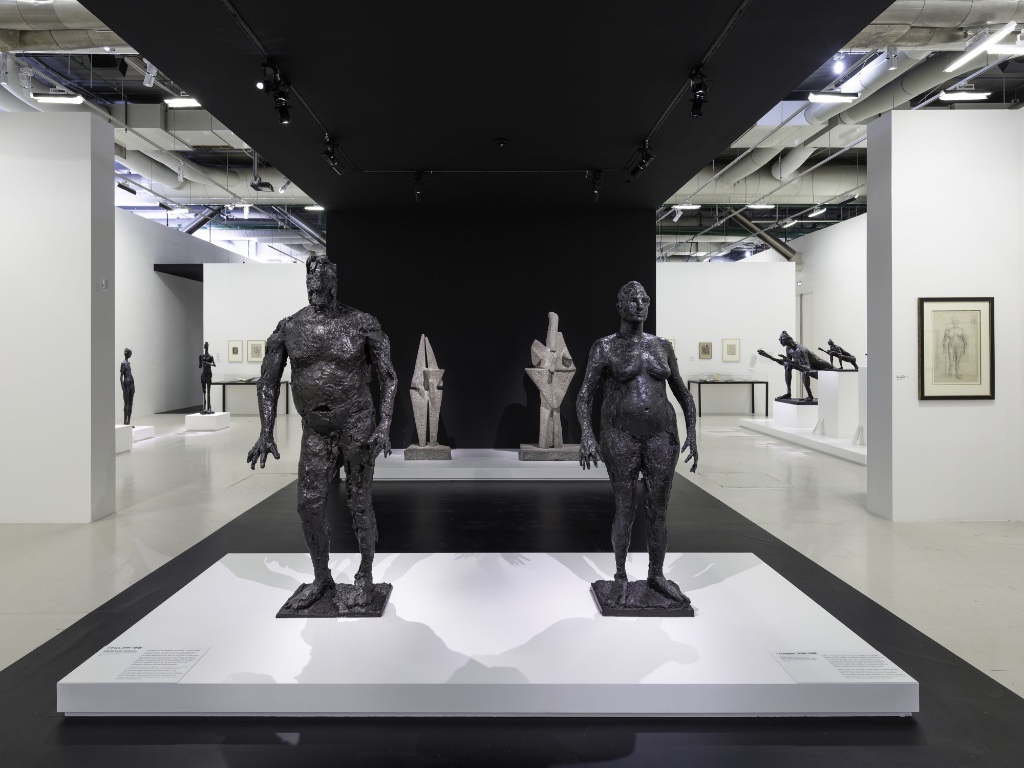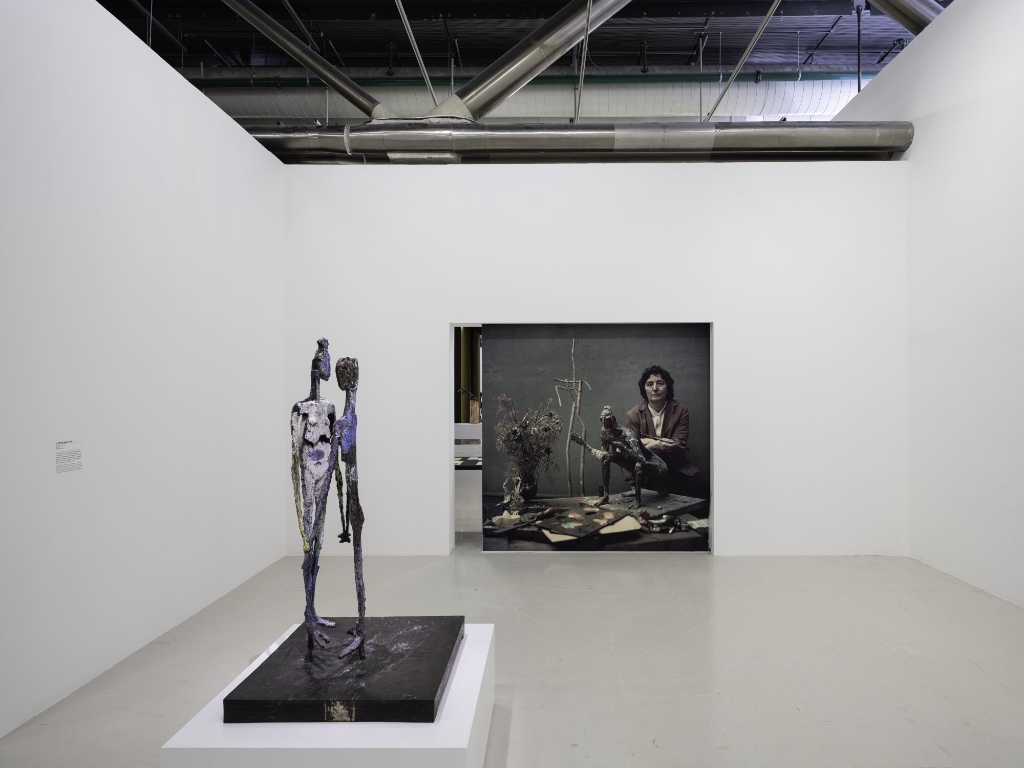The history of modern French sculpture can be easily traced in Paris by a pilgrimage to the Rodin Museum, followed by a visit to the just-reopened Bourdelle Museum (more on that in an upcoming issue of Paris Update), featuring the work of one of Rodin’s most prominent students. The logical continuation of this progression might be a trip to the museum of the work of one of Bourdelle’s favorite students, Germaine Richier (1902-59), but, unfortunately, there is no such thing. Why not? Who knows, maybe because she was a woman or because she didn’t have as many prominent public commissions as her two male predecessors. In any case, the Centre Pompidou is helping to temporarily fill that void with its current retrospective of the artist’s work.

Richier’s talent was obvious from the start, as shown by the collection of skillful busts at the beginning of the show, some of them portraits of friends and acquaintances from the Montparnasse artistic circle she frequented, meeting up with, among others, Jean Arp, Marino Marini and Alberto Giacometti at the now-famous Le Dôme and La Coupole. Success came quickly, and she took on her own students after leaving the studio of Bourdelle, who died in 1929.
Her World War II exile in Switzerland, however, caused a major disruption in her work. Her more or less classical and realistic approach to sculpture gave way to a more violent, atavistic style in which human figures morphed into or merged with animals and insects. Human females became toads, grasshoppers and praying mantises. Relics from the natural world – branches and rocks – become half-human figures that seemed to spring from the pages of Ovid’s Metamorphoses in the midst of their transformation.

Her works “L’Orage” (“Storm Man”) and “L’Ouragane” (“Hurricane Woman”) were seen as representing a postwar existential crisis. Richier’s friends even nicknamed her “L’Ouragane” because of the explosive quality of her work and the volcanic nature of the artist herself under her placid exterior and “Mona Lisa smile.” “My statues are not unfinished,” she once said. “I have gouged them, torn them so they’re varied on every side, so they have a living and changing aspect.”
One of her half-human/half-natural figures caused a major scandal that only made Richier more famous. Commissioned in 1949 to sculpt a crucifix for the new Église Notre-Dame-de-Toute-Grâce on the Plateau d’Assy in the French Alps, she made a faceless bronze sculpture that effectively expresses the “unspeakable suffering” of Christ, whose desiccated body is fused with the wood of the cross. As one commentator put it, Christ “seems to have been devoured by the cross, absorbed and restored by it.”
The Bishop of Annecy was not pleased and had it taken down from the main altar and hidden away. Today, it is back in its proper place, and the church – decorated by some of the leading artists of the time, including Braque, Bonnard, Matisse, Chagall and Rouault – is listed as a historic monument. Richier’s powerful “Christ d’Assy” is on show outside of the church for the first time in the Centre Pompidou’s exhibition, where it hangs in its own room and is beautifully lit.

Toward the end of her relatively short life – she died of breast cancer at the age of 58 at the height of her fame – some of Richier’s human sculptures took on a spindly, Giacometti-like look, and she began to use color on her works. One of the last pieces in the show is “The Painted Couple” (1959), a bronze sculpture made three years earlier, in which a man and woman stand facing each other closely, their hands touching. It tells a tender story altogether different from that of such frightening earlier pieces as those praying mantises poised to pounce.
See our list of Current & Upcoming Exhibitions to find out what else is happening in the Paris art world.
Favorite